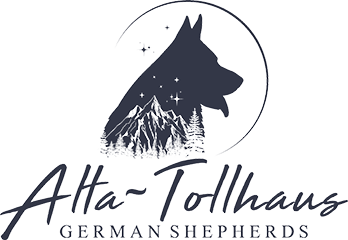All that are familiar with AKC obedience and then were introduced to Schutzhund obedience have wondered at the differences between the two. I found an excerpt from a book that I think explains the differences very well.
The book is “Schutzhund: Theory and Training Methods” by Susan Barwig and Stewart Hilliard Copyright 1991, Wiley Publishing:
Viewed from the die-hard AKC enthusiast’s standpoint, Schutzhund dogs often lack the precision, and some of them are too lighthearted and boisterous about their work. Superficial comparisons of this sort overlook the fundamental differences between the two sports.
The most obvious is the difference in scale. The Schutzhund dog does not traverse a twenty-by-forty-foot ring during the obedience routine. It traverses an entire playng field. it has far more ground to cover, and the routine is more flowing and faster paced.
More important, the Schutzhund dog is a working dog, not just an obedience dog. It is not a specialist but a generalist that is expected to display all around talent and utility. On the same day that it competes in obedience it has two other phases in which to perform that involve many hours of training. a great number of skills to learn and some rare qualities of character.
The most important distinction between Schutzhund and AKC trials is that Schutzhund is not only a training test but also a breed test. The obedience phase is used not just to examine the dog’s schooling, but its character as well. For this reason, the Schutzhund’s obedience program includes two tests of nervous stability that do not appear in AKC competition; response to gunshots and heeling in a group of people.
Because the trial is a breed test, the Schutzhund judge looks as much to the dog’s attitude about working as he does to the animal’s precision during the exercises. The Schutzhund dog must make an impression in obedience. It should show in every line of its body its delight in being at work with its master.
According to the old German saying about obedience, “The fast dog loses points slowly, while the slow dog loses points fast.” We wholeheartedly endorse this ideal. From our perspective as breeders of working dogs, the obedience phase is primarily a character test for willingness.


I like that old German saying. I can’t stand watching a dog poke along during its routine!
Exactly why I was laughing every time Rafe lost points for forging!